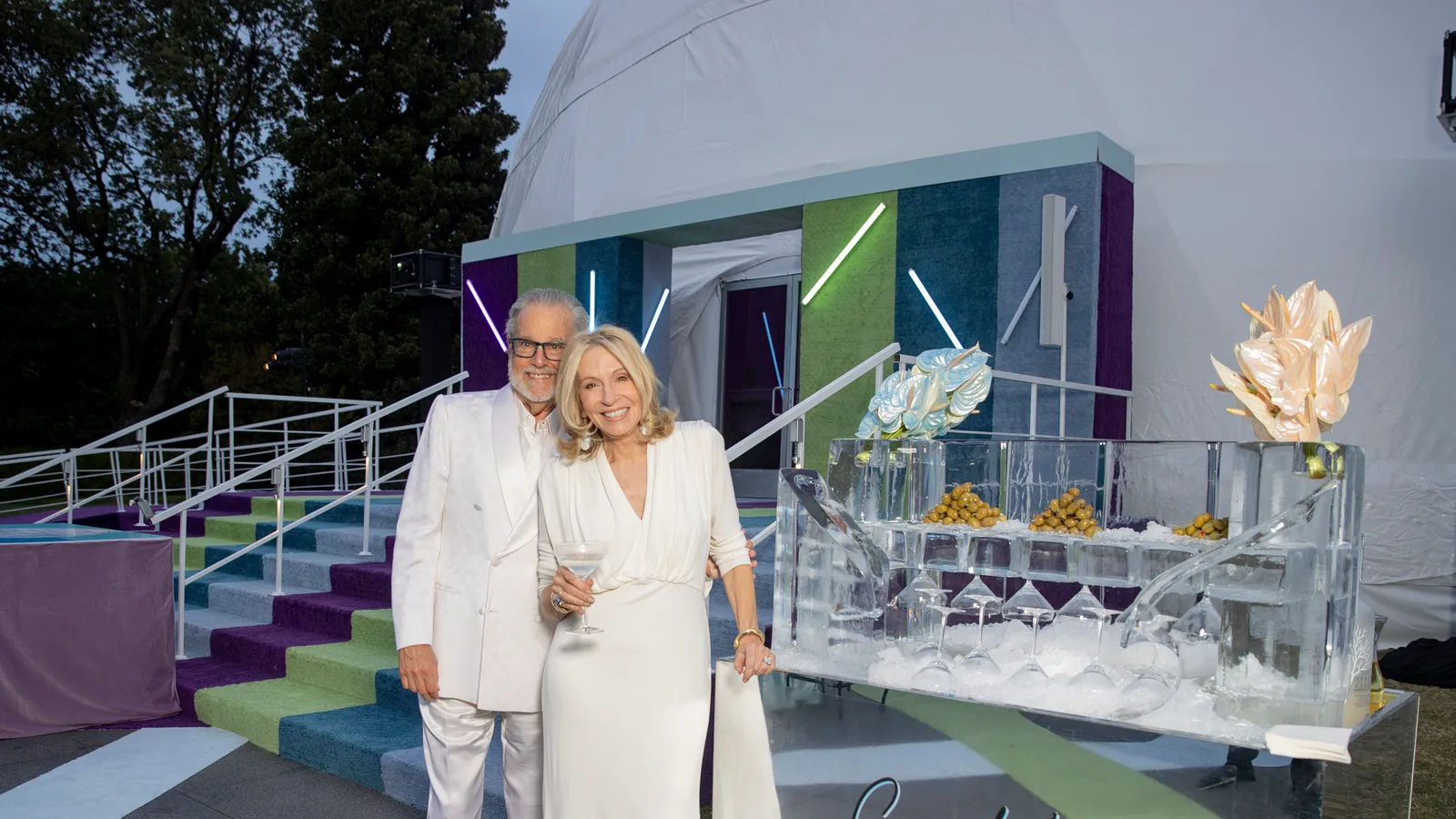In a world where the relentless pace of life often leaves us yearning for respite, there’s an ancient and universal remedy that transcends borders and beckons to our weary souls—luxury spa rituals. These age-old traditions are far more than indulgent experiences; they’re profound journeys into the hearts of diverse cultures, offering rejuvenation for both body and spirit.
Picture this: You find yourself in a serene Japanese garden, listening to the tranquil sounds of nature. As you step into the warm embrace of a traditional onsen, you can feel the tension melting away. Or perhaps you’re transported to the opulent bathhouses of the Middle East, where centuries-old hammam rituals envelop you in a sense of timeless luxury.
The allure of luxury spa rituals knows no bounds. It’s a global symphony of wellness practices, with each culture composing its unique melody. These rituals are deeply rooted in the essence of their respective societies, and as you’ll soon discover, they are not just about relaxation; they are a testament to the human need for holistic well-being.
In this exploration, we embark on a journey that transcends geographical boundaries, uncovering the secrets of luxury spa rituals from different corners of the world. These rituals offer a temporary escape from the chaos of our lives and a profound insight into the cultures that birthed them.
From the ancient Greeks’ reverence for hydrotherapy to the spiritual Zen bathing of Japan, from the communal gatherings of Middle Eastern hammams to the soul-cleansing sweat lodges of Native Americans, and the saunas of Finland to the nature-inspired bush spas of Aboriginal Australians, our quest for rejuvenation will take us to the far reaches of the globe.
But these rituals are not relics of the past; they are living traditions. They also express the universal human longing for relaxation, renewal, and a deeper connection to our well-being. So, as we embark on this journey, let us embrace the global appeal of spa experiences. Let us step into the world of luxury spa rituals—a world that rejuvenates and connects us to the timeless rhythms of humanity.
The Ancient Origins of Spa Rituals
Balneotherapy and the Greeks: A Dive into the Ancient Origins of Spa Culture
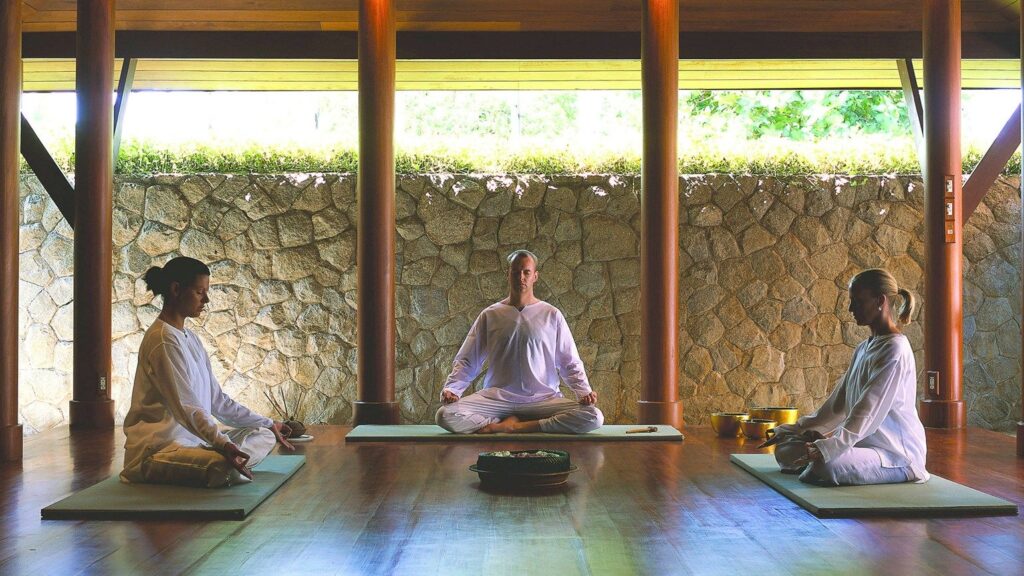
In the bustling heart of modern Athens, among the remnants of an illustrious civilization, lies a testament to the enduring allure of spa culture—the ancient Greek tradition of balneotherapy. While we may associate the concept of spa culture with contemporary luxury, the Greeks were pioneers in recognizing the therapeutic power of water, laying the foundation for the spa experiences we cherish today.
The Greek Obsession with Hydrotherapy
For the ancient Greeks, water was not just a life-sustaining element; it was revered for its healing properties. The roots of balneotherapy can be traced back to this civilization, where hydrotherapy, or using water for therapeutic purposes, flourished.
A Sacred Tradition: To the Greeks, water was divine. They believed it possessed sacred qualities, and certain natural springs were considered gifts from the gods. These springs were believed to have the power to heal the body and the soul. Asclepius, the Greek god of medicine, often held a staff entwined with a snake, symbolizing the therapeutic powers of water and the renewal it could bring.
Thermal Springs: Greece’s geographical diversity gifted it with many thermal springs, each with its unique mineral composition and therapeutic benefits. These thermal springs were cherished as places of rejuvenation, attracting visitors from far and wide.
The Greek Bathhouse Experience
One of the most iconic manifestations of Greek hydrotherapy was the creation of grand bathhouses. These bathhouses, or “balaneia,” became social and physical well-being centers.
Architectural Marvels: Greek bathhouses were marvels characterized by intricately designed columns, elegant mosaics, and graceful fountains. They were places for physical cleansing and intellectual and philosophical discussions. In these bathhouses, minds converged, and ideas flowed as freely as the water.
The Ritual: The Greek bathhouse experience was more than just a bath; it was a ritual. It began with a gentle massage using aromatic oils to prepare the body. Visitors then moved through progressively heated rooms, allowing the body to acclimate to the rising temperatures. The pinnacle of their unparalleled respect, where the healing powers of the mineral-rich water worked their magic. These baths were more than just a physical cleansing; they were a holistic journey, rejuvenating both body and soul.
The Legacy of Greek Balneotherapy
The legacy of Greek balneotherapy extends far beyond the borders of ancient Greece. It has left an indelible mark on wellness and spa culture. The Greeks’ recognition of the therapeutic potential of water laid the groundwork for the luxurious spa experiences we indulge in today.
Holistic Well-Being: The Greeks understood that well-being extends beyond the physical realm. Their spa culture emphasizes the interconnectedness of mind, body, and spirit, which resonates with modern spa philosophies. Today’s spa experiences often draw from the Greek tradition of holistic well-being, offering treatments that rejuvenate the body and nourish the soul.
Mineral Therapy: The mineral baths and therapies provided in modern spas are reminiscent of the mineral-rich thermal springs that the Greeks revered. The use of natural minerals for healing has endured, from Epsom salt baths to volcanic clay treatments.
Philosophy of Wellness: The Greek bathhouse, where intellectual and philosophical discussions thrived, serves as a precursor to the modern spa as a place of relaxation, reflection, and self-care. Mental well-being and physical rejuvenation are a cornerstone of today’s spa experiences.
In the annals of spa history, the ancient Greeks stand as trailblazers, their wisdom echoing through the millennia. Their belief in the healing power of water, their dedication to holistic well-being, and their reverence for the bath ritual continue to inspire and guide us in our pursuit of relaxation and rejuvenation. As we immerse ourselves in the luxurious spa rituals of today, let us remember the ancient Greeks and their enduring legacy of balneotherapy. This timeless tradition celebrates the harmonious union of body, mind, and spirit.
Balneotherapy and the Greeks: Unlocking the Origins of Spa Culture
When we think of spa culture, our minds often conjure serene retreats, luxurious massages, and bubbling hot tubs. However, the roots of this rejuvenating tradition reach deep into the annals of history, back to the ancient Greeks. The Greeks, known for their contributions to philosophy, art, and medicine, also laid the foundations of modern spa culture through their practice of balneotherapy, which incorporated hydrotherapy into their wellness practices. In this journey, we will explore how the Greeks embraced water as a source of physical and spiritual healing, leaving a legacy that continues to shape our spa experiences today.
The Greek Obsession with Hydrotherapy
The Greeks possessed an unparalleled reverence for water, recognizing its life-sustaining properties and its potential for therapeutic benefits. Their relationship with water extended beyond mere survival; it encompassed the belief that water could heal both the body and the soul.
A Divine Connection: Water held a sacred place in Greek mythology. Springs and natural water sources were often considered gifts from the gods, with the ability to bestow healing and vitality. Asclepius, the god of medicine, prominently featured a staff entwined with a snake, symbolizing both healing and the curative properties of water. This divine connection between water and well-being laid the groundwork for balneotherapy.
The Thermal Springs: Greece’s diverse geography gifted it with abundant thermal springs, each boasting its unique mineral composition and therapeutic potential. These thermal springs, emerging from the depths of the earth, became sanctuaries for those seeking healing and renewal. Due to the legends surrounding these mineral-rich waters’ transformative abilities, people traveled far and wide to immerse themselves in them.
The Greek Bathhouse Experience
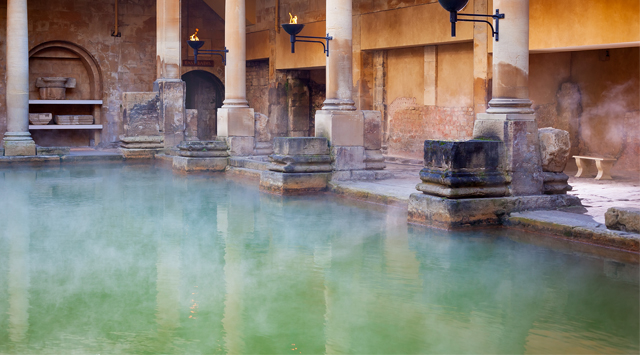
One of the most remarkable manifestations of Greek balneotherapy was the creation of grand bathhouses known as “balaneia.” These bathhouses were places for physical cleansing and cultural centers where the mind and body converged.
Architectural Marvels: Greek bathhouses were wonders characterized by intricate columns, stunning mosaics, and graceful fountains. They served as venues for philosophical discussions and intellectual exchanges. Minds flourished amidst the gentle sounds of flowing water. These structures were not just places for the body’s renewal but also the enrichment of the soul.
The Ritual of Healing: The Greek bathhouse experience was nothing short of a ritual. It commenced with a soothing massage, often aromatic oils, to prepare the body for the journey ahead. Visitors then progressed through progressively heated rooms, allowing their bodies to acclimate to increasing temperatures. The culmination of this journey was the thermal baths, where the mineral-laden waters worked their magic. These baths were not just about physical cleansing; they were holistic experiences, rejuvenating both the physical body and the spiritual self.
The Legacy of Greek Balneotherapy
The legacy of Greek balneotherapy has transcended time and geography. It has left an indelible mark on the wellness and spa culture, shaping how we perceive and experience spa treatments today.
Holistic Well-Being: The Greeks were ahead in recognizing that well-being encompassed more than just physical health. Their spa culture emphasized the interconnection of the mind, body, and spirit—a principle that resonates with the philosophy of modern spas. Contemporary spa experiences often draw inspiration from this holistic approach, offering treatments that rejuvenate the body and nurture the soul.
Mineral Therapy: The mineral baths and therapies provided in today’s spas reflect the mineral-rich thermal springs that the Greeks revered. Whether it’s an Epsom salt soak or a volcanic clay treatment, using natural minerals for healing has endured through the centuries.
Philosophy of Wellness: The Greek bathhouse, where philosophical discussions thrived, serves as a precursor to the modern spa as a place of relaxation, reflection, and self-care. The significance of mental well-being alongside physical rejuvenation is a cornerstone of contemporary spa experiences.
As we immerse ourselves in modern spa culture, it’s worth reflecting on the ancient Greeks and their enduring legacy of balneotherapy. Their belief in the healing power of water, their commitment to holistic well-being, and their reverence for the bath ritual continue to inspire and guide us in our pursuit of relaxation and rejuvenation. In celebrating this timeless tradition, we honor not only the Greeks but also the harmonious union of body, mind, and spirit. This legacy endures through the soothing waters of time.
Ayurveda and India: Unveiling the Ancient Art of Wellness
In the kaleidoscope of human wellness practices, few traditions shine as brightly and enduringly as Ayurveda. Rooted in the ancient wisdom of India, Ayurveda is a holistic system of medicine and well-being that has captivated hearts and minds for over 5,000 years. This time-honored tradition extends far beyond herbal remedies and dietary guidelines; it’s a way of life that has profoundly influenced spa culture. In this journey, we’ll explore the essence of Ayurveda, unveiling its profound principles and discovering how they are seamlessly woven into spa rituals, offering a transformative experience that nourishes both body and soul.
Unearthing Ayurveda: A Glimpse into India’s Healing Heritage
Ayurveda, often called the “Science of Life,” is a testament to India’s enduring quest for holistic well-being. Its origins are rooted in the Vedas, the ancient texts that form the foundation of Indian knowledge systems. Ayurveda’s core philosophy revolves around the idea that harmony between mind, body, and spirit is essential for health and wellness.
Balance and Harmony: At the heart of Ayurveda lies the principle of balance. It recognizes that each individual is a unique combination of elements—earth, water, fire, air, and ether—and that maintaining equilibrium among these elements is key to well-being. When an imbalance occurs, it can lead to ailments and disease.
The Doshas: Ayurveda categorizes individuals into three primary constitutional types or “doshas”: Vata (air and ether), Pitta (fire and water), and Kapha (earth and water). Each dosha governs specific aspects of the body and mind, and understanding one’s dominant dosha is crucial in Ayurvedic practice.
Ayurveda in Spa Culture: A Holistic Journey of Wellness
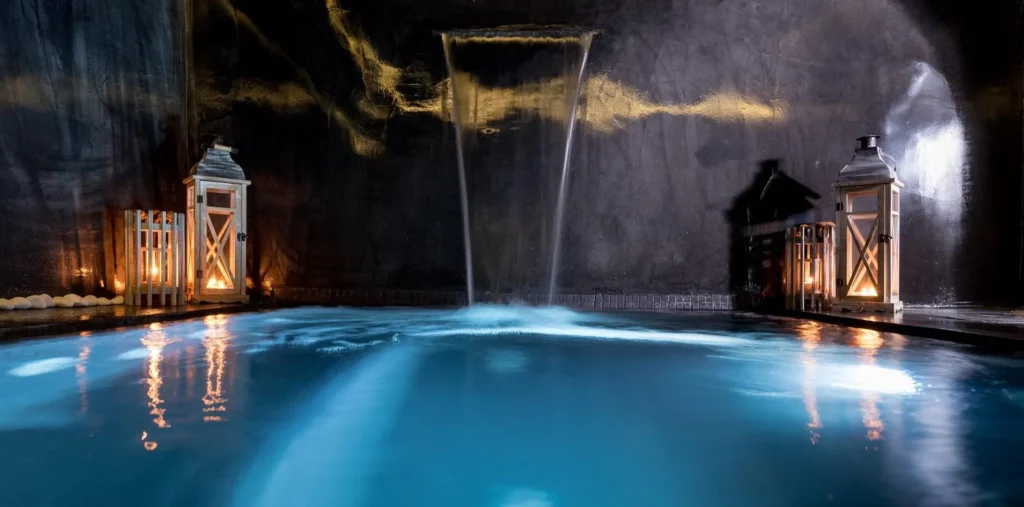
Ayurvedic principles are seamlessly integrated into spa rituals, offering a transformative experience that harmonizes the physical, mental, and spiritual realms.
Customization: One of the fundamental tenets of Ayurveda is individualization. Spa experiences rooted in Ayurveda often begin with a consultation to determine a guest’s dosha or constitution. This allows customized treatments to align with the individual’s unique needs and imbalances.
Abhyanga: The Art of Massage: At the heart of Ayurvedic spa rituals is the art of massage, known as “abhyanga.” Warm herbal oils, infused with the healing properties of nature, are meticulously applied to the body. The rhythmic strokes of the massage not only soothe tired muscles but also facilitate the release of physical and emotional blockages.
Shirodhara: The Mind’s Serenade: Shirodhara is an iconic Ayurvedic treatment where a continuous stream of warm herbal oil is poured gently onto the forehead, specifically the “third eye” region. This practice induces deep relaxation, calming the mind and promoting mental clarity.
Panchakarma: The Ultimate Detox: For those seeking a profound purification experience, Ayurvedic spas offer Panchakarma, a comprehensive detoxification program. It includes a series of treatments like herbal enemas, nasal cleansing, and therapeutic vomiting (emesis) under the guidance of trained Ayurvedic therapists.
A Spiritual Journey of Wellness
Ayurvedic spa rituals are not just about physical rejuvenation; they are a spiritual wellness journey. They remind us that the path to true well-being involves the body, mind, and spirit.
Mindful Awareness: Ayurveda encourages mindfulness, an awareness of one’s thoughts, feelings, and sensations. Spa experiences rooted in Ayurveda often incorporate meditation and mindfulness, fostering mental clarity and emotional balance.
Dietary Wisdom: Ayurveda places immense importance on diet and nutrition. Ayurvedic spas often offer nourishing meals that align with one’s dosha, showcasing how food can be both healing and pleasurable.
A Timeless Tradition: As we delve into the world of Ayurveda and its integration into spa culture, we are reminded that this ancient tradition is not a relic of the past but a living, breathing practice that continues to offer profound insights into holistic wellness.
In the soothing sanctuaries of Ayurvedic spas, ancient wisdom meets modern comfort, and guests are invited to embark on self-discovery and healing. These spa rituals, rooted in the timeless principles of Ayurveda, serve as a reminder that wellness is not a fleeting destination but a lifelong journey. This journey nourishes not just the body but also the soul.
Japanese Zen Bathing
Onsen: Japan’s Hot Springs – A Journey to Meditative Healing
In the land of the rising sun, amidst the lush landscapes and serene mountains, lies a profound tradition that transcends mere relaxation—the world of “onsen,” Japan’s hot springs. Beyond the picturesque landscapes, onsen represents a cultural cornerstone, an immersive experience that delves into the very soul of Japan. In this exploration, we’ll submerge ourselves into the warm waters of onsen, understanding its cultural significance and the transformative, meditative healing it offers both body and mind.
The Sacred Significance of Onsen
Onsen is more than just a hot bath; it’s an integral part of Japanese culture and spirituality. “onsen” translates to “hot water,” but its essence reaches far deeper.
Geothermal Blessings: Japan’s unique geological makeup, nestled on the Pacific Ring of Fire, provides the nation with a wealth of natural hot springs. These geothermal blessings have been revered for centuries for their mineral-rich waters and healing properties.
Ritual and Tradition: Onsen bathing is more than a physical practice; it’s a ritual steeped in tradition. Cleansing one’s body in the thermal waters carries with it a sense of purification, both physical and spiritual. It’s a process that invites mindfulness, presence, and reverence.
The Meditative Aspects of Onsen Bathing
The tranquil act of soaking in onsen is far from a mere pastime; it’s a meditation in its own right. The experience encourages a profound connection between body and spirit.
Nature’s Symphony: Onsen is often located in serene natural settings—nestled among mountains, overlooking rivers, or surrounded by forests. The symphony of nature—chirping birds, rustling leaves, or softly flowing water—accompanies the bather, creating an ambiance of serenity and meditation.
Silence and Reflection: Onsen bathing is a practice of silence and self-reflection. The external world fades away as you immerse yourself in the water’s warm embrace. Simply being free from distractions allows for introspection and mental stillness.
Physical Healing: Beyond its spiritual aspects, onsen offers tangible physical benefits. The mineral-rich waters are believed to alleviate various ailments, from muscle soreness to skin conditions. The heat of the water increases circulation, promoting relaxation and healing.
The Onsen Experience
A visit to an onsen typically follows a structured yet deeply immersive pattern.
Purification Ritual: Visitors must undergo a purification ritual before entering the bath. It involves thoroughly washing and rinsing the body to ensure the onsen waters remain pure and untainted.
Variety of Baths: Onsen establishments offer a variety of baths, each with its unique mineral composition and temperature. Some baths are scalding hot, while others are comfortably warm. This diversity allows visitors to choose the experience that suits them best.
Outdoor Bliss: One of the most cherished aspects of onsen bathing is the opportunity to enjoy an outdoor bath, known as “rotenburo.” These baths are often situated in stunning natural settings, allowing bathers to immerse themselves in the beauty of the landscape while indulging in meditative relaxation.
The Healing Power of Onsen
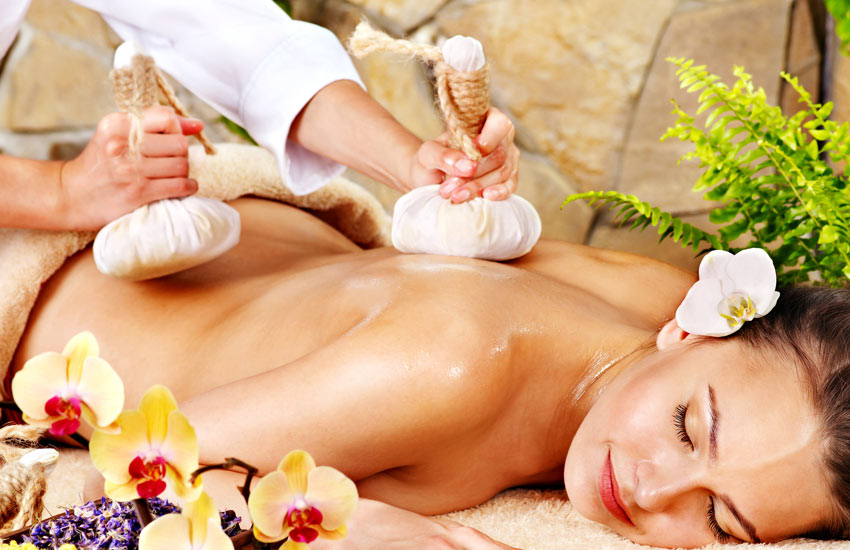
Beyond the immediate relaxation, onsen has the power to heal in profound ways.
Stress Reduction: The soothing warmth of onsen water melts away stress and tension. It’s a refuge from the demands of daily life, a place where the mind can unwind and find tranquility.
Pain Alleviation: The mineral content in onsen waters has been known to alleviate various physical discomforts. From sore muscles to arthritis, onsen bathing can relieve and promote physical healing.
Rejuvenation: After a soak in onsen, bathers often report feeling refreshed and rejuvenated physically and mentally. It’s a practice that rejuvenates the body and renews the spirit.
The onsen experience is more than just a soak; it’s a journey into the heart of Japan’s culture and a gateway to meditative healing. As you immerse yourself in the warm, mineral-rich waters, you cleanse your body and rejuvenate your mind and spirit. It’s a practice that invites you to be present, to listen to the whispers of nature, and to find solace in the gentle embrace of the hot springs. So, when the world grows overwhelming, consider the timeless wisdom of onsen and allow its meditative healing powers to guide you to a place of serenity and renewal.
Sento: Public Bathhouses – A Dive into Japan’s Communal Heart
In the tapestry of Japanese culture, a thread exists that weaves through time, connecting generations in an intimate, cleansing ritual—the “sento” or public bathhouses. Beyond their functional purpose, sento represents a sacred cultural space, a sanctuary of communal experience and shared cleansing. In this exploration, we’ll step into the warm waters of sento, understanding the significance of this age-old tradition and its profound cultural importance in Japanese society.
The Communal Heart of Sento
Sento is more than just a place to wash away the day’s cares; it’s a living testament to the Japanese spirit of community and togetherness.
A Gathering Place: Sento is a communal gathering place where neighbors come together, transcending the boundaries of age, social status, and gender. It’s a space where people from all walks of life converge, fostering a sense of unity and belonging.
The Art of Cleanliness: Sento bathing is an art form in itself. Bathers enter the bathhouses after thoroughly washing their bodies, symbolizing physical cleansing and spiritual purification. It’s a meticulous process that reflects the Japanese commitment to cleanliness.
The Cultural Significance of Sento
Sento holds a hallowed place in Japanese culture, deeply rooted in tradition and symbolism.
Historical Roots: The origins of sento can be traced back to the 6th century, during the Asuka period. Initially, these bathhouses were reserved for the elite and aristocracy. However, over time, they evolved into public spaces, becoming accessible to all.
Respect for Nature: Sento embodies the Japanese reverence for nature. Many bathhouses are adorned with natural materials, like wood and stone, creating an ambiance that connects bathers to the natural world. The sound of flowing water and the aroma of hinoki wood create a sensory experience deeply rooted in Japanese culture.
The Sento Experience
A visit to sento follows a well-defined ritual, reflecting this practice’s cultural and spiritual aspects.
Purification Process: Before entering the bath, bathers must thoroughly purify. This involves thoroughly washing and rinsing the body to ensure the onsen waters remain pure and untainted.
Variety of Baths: Sento establishments typically offer a variety of baths, each with its unique features and mineral compositions. These include hot baths, cold baths, and even electric baths that offer a stimulating experience. The diversity allows bathers to tailor their experience to their needs and preferences.
Sauna and Steam Rooms: Many sento bathhouses also include saunas and steam rooms, adding a layer of relaxation and cleansing. These spaces encourage the release of toxins through sweat and promote physical and mental rejuvenation.
A Cultural Legacy
Sento embodies the essence of Japanese culture—a culture deeply rooted in tradition, community, and respect for nature. In the serene, warm waters of sento, bathers are not just cleansing their bodies; they are partaking in a profound cultural tradition that transcends generations.
Community Bonding: Sento is where bonds are forged, stories are shared, and generations connect. It’s a cultural anchor that fosters a sense of belonging in an increasingly fast-paced and fragmented world.
Shared Experience: The communal bathing in sento is a shared experience that reminds the Japanese of their cultural heritage. It’s a practice that unites individuals in appreciating a time-honored tradition.
A Gentle Reminder: In a world where modernity often threatens to overshadow tradition, sento is a gentle reminder of the enduring significance of cultural practices. It’s a testament to the resilience of Japan’s cultural heritage.
As we step into the warm embrace of sento, we are not just cleansing our bodies; we are immersing ourselves in the heart of Japanese culture. Sento is a practice that embodies the essence of community, respect for nature, and reverence for tradition. It’s a cultural treasure that invites us to pause, reflect, and connect with the spirit of a nation deeply rooted in its heritage. So, when you find yourself in Japan, consider taking a dip into the soothing waters of sento and experience a cleansing of the body and the soul—a journey into the heart of Japan’s communal spirit.
Hammams of the Middle East
The Art of Hammam: Unveiling the Ritualistic Middle Eastern Bathhouse
In the heart of the Middle East, where tradition and culture converge in a mesmerizing blend, there exists a sanctuary of relaxation and purification—the “hammam,” or traditional Middle Eastern bathhouse. Beyond its ornate architecture and intricate tilework, the hammam represents a rich tapestry of rituals, centuries-old and deeply ingrained in the fabric of Middle Eastern society. In this exploration, we’ll step into the soothing warmth of the hammam, unraveling its secrets and discovering the profound ritualistic elements that make it a cultural treasure.
The Mystique of the Hammam
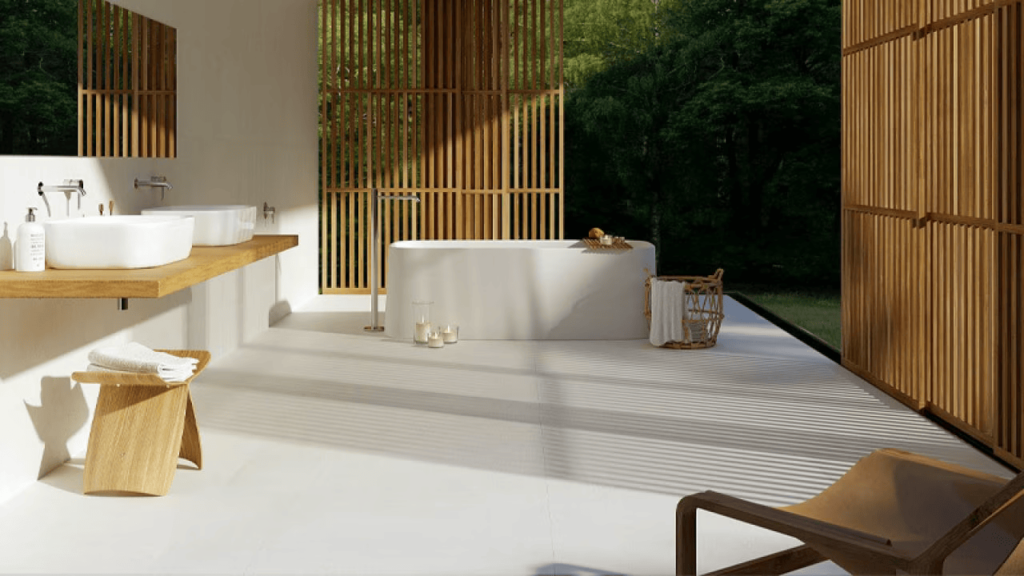
The hammam is more than just a place to cleanse the body; it’s a sanctuary for the mind and a bridge to the past.
A Timeless Tradition: The roots of the hammam can be traced back to ancient Roman and Byzantine bathhouses. However, it was in the Islamic world that the hammam evolved into a distinct cultural institution. Over the centuries, it has remained a vital part of Middle Eastern culture.
Architectural Marvels: Hammams are marvels characterized by intricate tilework, domed ceilings, and marble floors. These opulent bathhouses evoke a sense of grandeur and elegance. The architecture is not just aesthetic; it plays a role in the thermal dynamics of the hammam.
The Ritualistic Elements of Hammam Bathing
Hammam bathing is far from a routine; it’s a meticulously choreographed ritual that encompasses physical and spiritual purification.
The Transition: The journey into the hammam begins in a transition area, often adorned with geometric designs. Here, bathers undress, leaving behind the burdens of the external world. It’s a symbolic act of shedding not just clothing but also the stresses and worries of daily life.
The Steam Room: The heart of the hammam is the steam room, where the body undergoes a profound transformation. The steam purifies the skin, relaxes muscles, and opens pores. In the intense heat, bathers often sit on heated marble benches, allowing the body to adapt gradually to the rising temperatures.
The Exfoliation: One of the central elements of hammam bathing is “gommage,” or exfoliation. Bathers are scrubbed vigorously with a coarse mitt, often accompanied by black soap, to remove dead skin cells and impurities. This process rejuvenates the skin and symbolizes shedding the past and embracing renewal.
Cooling Down: After the heat of the steam room, bathers move to a cooler room to relax and cool down. This transition is essential for the body to recover and rehydrate.
Hydration and Nourishment: Hammams often offer refreshments, such as mint tea and fruits, to replenish the body’s fluids and nutrients. This phase allows bathers to savor the sense of relaxation and rejuvenation.
The Hammam as a Social and Cultural Hub
The hammam transcends its physical function as a bathhouse, where culture, community, and social connections flourish.
Community Bonding: The hammam is where individuals from various backgrounds converge, sharing stories and laughter. It fosters a sense of community and camaraderie.
Cultural Significance: Hammam bathing is deeply ingrained in Middle Eastern culture. It’s a practice and a reflection of the region’s rich heritage. The rituals and customs associated with the hammam are a testament to the enduring traditions of the Middle East.
A Spiritual Connection: Beyond physical aspects, hammam bathing can also be a spiritual experience. Cleansing the body is often seen as a way to purify the soul and find inner peace.
As we step into the captivating world of the hammam, we are not just cleansing our bodies; we are immersing ourselves in a centuries-old ritual that transcends the physical and reaches into the spiritual. The hammam embodies the essence of Middle Eastern culture, blending tradition, community, and well-being into a harmonious experience. So, when you find yourself in the heart of the Middle East, consider indulging in the art of hammam—a journey into relaxation, renewal, and the enduring spirit of the region.
Ghassoul and Black Soap: Secrets of Hammam Spa Luxury
Amidst the Middle Eastern hammam’s intricate rituals and opulent architecture, two humble yet remarkable products play a starring role—ghassoul clay and black soap. These spa treasures, born from the earth and crafted with centuries of wisdom, hold the key to a rejuvenating and transformative hammam experience. In this exploration, we’ll unveil the secrets of ghassoul and black soap, shedding light on their unique qualities and their profound role in revitalizing the skin and soul.
Ghassoul Clay: Nature’s Gift to Hammam Rituals
Ghassoul clay, or Moroccan red clay or ghassoul clay, is a natural mineral-rich clay used for centuries in North African and Middle Eastern spa traditions. Its unique composition and properties make it a cornerstone of the hammam experience.
Mineral-Rich Elixir: Ghassoul clay is sourced from the Atlas Mountains of Morocco, where it forms through natural geological processes. The clay is enriched with essential minerals like magnesium, silica, calcium, and potassium. These minerals have a plethora of benefits for the skin.
Detoxification and Exfoliation: Ghassoul clay is renowned for its detoxifying and exfoliating properties. When applied to the skin, it binds to impurities and excess oils, gently drawing them out. Its fine texture also acts as a mild exfoliant, sloughing away dead skin cells and leaving the skin fresh and rejuvenated.
Balancing Act: Unlike many clay masks that can be overly drying, ghassoul clay is gentle and suitable for all skin types. It helps balance the skin’s natural oils, making it ideal for those with oily or acne-prone skin.
Black Soap: The Cleansing Balm of the Hammam
Black soap, also known as “beldi soap” or “savon noir,” is a traditional soap used in the hammam ritual. It’s a remarkable cleansing agent that paves the way for a thorough hammam experience.
Natural Ingredients: Black soap is made from natural ingredients, primarily olives and olive oil. It is enriched with eucalyptus oil, which gives it its distinct dark color and invigorating aroma.
Deep Cleansing: Black soap is a potent cleanser, capable of removing dirt, impurities, and dead skin cells. When applied and allowed to sit on the skin, it softens and prepares the skin for exfoliation.
Hydration and Softening: Despite its cleansing prowess, black soap is gentle on the skin. It does not strip the skin of natural oils; instead, it moisturizes and softens, leaving the skin supple and nourished.
The Hammam Rejuvenation
In the hammam ritual, ghassoul clay and black soap combine to create a transformative experience that rejuvenates the skin and spirit.
The Ghassoul Mask: The hammam begins with applying a ghassoul clay mask. This mask, enriched with the mineral goodness of the clay, is applied to the body and face. It draws out impurities as it dries, leaving the skin deeply cleansed and toned.
Black Soap Application: Following the ghassoul mask, black soap is applied to the body. With its natural ingredients, this soap deeply cleanses the skin, prepping it for exfoliation.
The Exfoliation: The exfoliation step involves using a Kessa glove or mitt. This special glove is designed to remove the softened skin and any remaining impurities gently. The result is skin that feels incredibly smooth and rejuvenated.
In the world of spa luxury, it’s often the simplest and most natural ingredients that hold the most profound secrets. Ghassoul clay and black soap, hailing from the heart of the hammam tradition, exemplify this truth. They embody the essence of the hammam experience—deeply cleansing, rejuvenating, and leaving the skin glowing with vitality. So, as you step into the timeless world of the hammam, remember the humble yet powerful roles of ghassoul and black soap, and let their natural magic guide you on a journey of skin and soul rejuvenation.
Scandinavian Saunas
Sauna Culture in Finland: Where Heat Meets Harmony
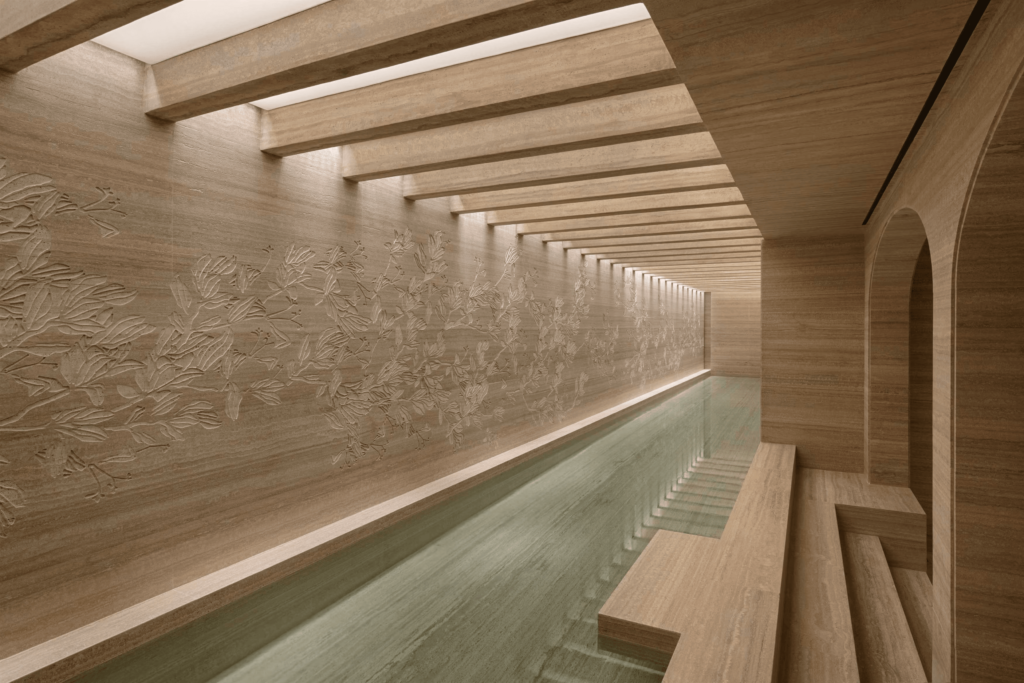
In the tranquil embrace of Finland’s pristine landscapes, an age-old tradition continues to thrive, transcending the boundaries of time and culture—the Finnish sauna. Beyond its rustic exterior and cozy warmth, the sauna represents a deeply ingrained cultural phenomenon, offering relaxation and a profound connection to nature and well-being. In this exploration, we’ll delve into the heart of Finland’s sauna culture, unraveling its rich history and uncovering the remarkable physical and mental health benefits of a rejuvenating sauna session.
The Finnish Sauna: A Cultural Heirloom
Saunas have been a cherished part of Finnish culture for centuries, and their presence is woven into the very fabric of society.
A Historical Heritage: The roots of the Finnish sauna can be traced back to ancient times. Saunas served as more than places to cleanse; they were venues for various rituals, including childbirth and decision-making meetings.
A Connection to Nature: Finland’s abundant forests and numerous lakes have always been a part of the sauna experience. Sauna-goers often combine their sessions with refreshing dips in lakes, rivers, or ice-cold water during winter—a practice known as “avantouinti” or ice-hole swimming. This connection to nature is integral to the Finnish sauna culture.
Physical Health Benefits of Sauna Sessions
Sauna bathing offers many physical health benefits, many of which have been recognized and validated by scientific research.
Improved Circulation: Sauna sessions increase heart rate and improve blood circulation. As the body temperature rises, blood vessels dilate, which helps to improve overall cardiovascular health.
Detoxification: Sweating in the sauna facilitates the removal of toxins and metabolic waste products through the skin. This detoxification process contributes to clearer skin and overall well-being.
Pain Relief: Sauna bathing can relieve various types of pain, including muscle soreness and arthritis. The heat and relaxation help soothe aching muscles and joints.
Enhanced Respiratory Function: The warm, humid air in the sauna can benefit individuals with respiratory conditions such as asthma and sinus congestion. It can help open airways and improve breathing.
Mental Health Benefits of Sauna Sessions
The Finnish sauna is not just about physical well-being; it also offers a respite for the mind and soul.
Stress Reduction: Sauna bathing promotes relaxation and reduces stress levels. The serene atmosphere, coupled with the soothing warmth, encourages mental calmness and tranquility.
Improved Sleep: Regular sauna sessions have been linked to better sleep quality. The relaxation induced by the sauna can help individuals fall asleep faster and enjoy more restful nights.
Mental Clarity: Sauna bathing provides an opportunity for reflection and mental clarity. The break from the fast-paced world allows individuals to disconnect and find inner peace.
The Sauna Experience
The Finnish sauna experience is a carefully crafted ritual, a dance between heat and relaxation.
Heating the Sauna: The process begins with heating the sauna stove, traditionally fueled by wood. The patient process allows the sauna room to reach the optimal temperature, typically between 70 to 100 degrees Celsius (160 to 212 degrees Fahrenheit).
Heat and Humidity: As bathers enter the sauna, they are enveloped in the dry heat. Water can be poured onto the hot stones to create a burst of steam, increasing humidity for a more intense experience.
Cooling Off: Sauna-goers periodically step outside to cool off, often immersing themselves in natural water sources or taking a brisk shower. This contrast between heat and cold is refreshing and stimulating.
As you enter the heart of Finland’s sauna culture, you enter a world where wellness meets tradition and heat meets harmony. The Finnish sauna is not just a place to sweat; it’s a sanctuary for the body and soul—a place where modern life’s stresses evaporate, leaving a sense of deep relaxation and connection to nature. So, when you find yourself in the serene landscapes of Finland, consider immersing yourself in the sauna culture and let the timeless tradition of Finnish sauna bathing guide you to a place of physical and mental well-being.
Sauna Culture in Finland: Where Heat and Harmony Converge
Nestled amidst the serene beauty of Finland’s pristine landscapes lies a cultural treasure revered for centuries—the Finnish sauna. Beyond a simple bathhouse, the sauna represents a profound aspect of Finnish identity and culture. With roots that run deep into history, the sauna offers both relaxation and a myriad of physical and mental health benefits. In this exploration, we’ll immerse ourselves in the heart of Finland’s sauna culture, unveiling its rich heritage and discovering the remarkable well-being advantages that arise from the time-honored tradition of sauna sessions.
The Finnish Sauna: A Cultural Pillar
Saunas have long been integral to Finnish life, deeply ingrained in the national psyche.
Historical Significance: The origins of the Finnish sauna can be traced back over a thousand years. In ancient times, saunas held a sacred place in Finnish society, often serving as sites for important rites of passage and social gatherings.
A Connection to Nature: Finland’s pristine environment, abundant with lakes and forests, complements the sauna experience. The tradition of “avantouinti,” or ice hole swimming, is a testament to the Finns’ harmonious relationship with nature, as they often combine sauna sessions with refreshing dips in icy waters.
Physical Health Benefits of Sauna Sessions
Sauna bathing offers many physical health benefits, many backed by scientific research.
Enhanced Blood Circulation: The sauna’s heat causes blood vessels to dilate, promoting better circulation. This can improve cardiovascular health, reduce blood pressure, and enhance overall well-being.
Detoxification: Sweating profusely in the sauna helps flush out toxins from the body through the skin. This process contributes to clearer skin and the elimination of impurities.
Pain Relief: The warmth of the sauna can alleviate various types of pain, including muscle soreness and joint stiffness. It helps relax muscles and provides relief from conditions like arthritis.
Respiratory Benefits: The warm, humid air in the sauna can help open airways and improve breathing for individuals with respiratory issues such as asthma.
Mental Health Benefits of Sauna Sessions
Beyond physical advantages, sauna sessions offer a sanctuary for mental relaxation and well-being.
Stress Reduction: Sauna bathing induces relaxation and reduces stress. The peaceful ambiance and enveloping warmth create a sense of calm and tranquility.
Improved Sleep: Regular sauna sessions have been associated with better sleep quality. The relaxation the sauna brings can lead to faster sleep onset and more restful slumber.
Mental Clarity: The solitude of the sauna provides an opportunity for introspection and mental clarity. It’s a place to disconnect from the demands of daily life and find inner peace.
The Sauna Experience
The Finnish sauna experience is a carefully orchestrated ritual, a dance between heat, steam, and rejuvenation.
Heating the Sauna: The process begins with heating the sauna stove, often fueled by wood. It’s a patient endeavor that allows the sauna room to reach the optimal temperature, typically between 70 to 100 degrees Celsius (160 to 212 degrees Fahrenheit).
Heat and Humidity: As bathers enter the sauna, they are enveloped in dry heat. Water can be ladled onto hot stones to create bursts of steam, increasing humidity for a more intense experience.
Cooling Off: The ritual involves intermittent cooling off, often achieved by stepping outside for fresh air or taking a refreshing plunge into a natural water source. This contrast between heat and cold invigorates and stimulates the body.
We find a harmonious blend of tradition and wellness in the heart of Finland’s sauna culture. The Finnish sauna is not merely a place to sweat; it’s a sanctuary for the body and mind—a refuge from the rigors of modern life. As you venture into the serene landscapes of Finland, consider immersing yourself in the sauna culture. Allow the timeless tradition of Finnish sauna bathing to guide you to a place of physical vitality and mental tranquility—an oasis where heat and harmony converge to create a unique and deeply enriching experience.
Ice Bath Plunges: A Thrilling Finnish Ritual
Amidst the gentle embrace of Finland’s forests and lakes, practice is as invigorating as it is astonishing—the ice bath plunge. Beyond the cozy warmth of the Finnish sauna, this chilling tradition complements the sauna experience, creating a dynamic contrast that invigorates the body and soul. In this exploration, we’ll dive into the world of ice bath plunges, discovering the thrill they bring and their harmonious synergy with the sauna, turning a leisurely pastime into a revitalizing ritual.
The Thrill of Ice Bath Plunges
Ice bath plunges are a practice that Finns have embraced for generations, offering an electrifying contrast to the warmth of the sauna.
Physical Shock: Immersing oneself in icy water shocks the system. As the body confronts the extreme cold, it triggers various physiological responses that are both stimulating and invigorating.
Endorphin Rush: Ice bath plunges release a rush of endorphins—the body’s natural feel-good hormones. This can result in euphoria and increased alertness, leaving bathers feeling rejuvenated.
Improved Circulation: The cold water causes blood vessels to constrict and then expand rapidly upon exiting the water. This process enhances circulation, delivering oxygen-rich blood to tissues and promoting cardiovascular health.
Complementing the Sauna Experience
The ice bath plunge is an integral part of the Finnish sauna tradition, creating a remarkable synergy that enhances the well-being benefits of both practices.
Alternating Heat and Cold: The contrast between the sauna’s intense heat and the ice bath’s shocking cold creates a unique cycle of thermal stress on the body. This alternation strengthens the immune system and boosts resilience to temperature extremes.
Rejuvenation and Refreshment: After spending time in the sauna, where you sweat profusely, and the body detoxifies, the ice bath plunge is like a refreshing reset. It closes pores, soothes the skin, and leaves bathers feeling exhilarated.
Mental Clarity: The sauna offers a respite for mental clarity, but the ice bath plunge can provide a similar experience. The sharp temperature change invigorates the mind and sharpens focus.
The Ice Bath Plunge Ritual
The ice bath plunge is not merely jumping into cold water; it’s a ritualized practice involving a series of deliberate steps.
Preparation: Before taking the plunge, sauna-goers often take a moment to prepare mentally. They may stand at the edge of the ice hole, take deep breaths, and mentally prepare themselves for the shock.
Quick Dip: The plunge is swift—a quick submersion into the icy water, followed by a rapid exit. It’s a momentary confrontation with the cold.
Cooling Down: After the ice bath, bathers typically step out and cool down by breathing deeply and slowly. They may repeat the process or return to the sauna for additional rounds.
In the heart of Finland’s sauna culture, the ice bath plunge is more than an act of daring; it’s a dynamic interplay of elements that awakens the senses and rejuvenates the body. The sauna and ice bath create a harmonious synergy, offering a balance of thrilling and refreshing extremes. As you immerse yourself in this Finnish ritual, you’ll discover the exhilaration of the plunge and the profound sense of vitality and renewal that it brings—a dance of fire and ice that invigorates the spirit in the tranquil embrace of nature.
Indigenous Healing Practices
Native American Sweat Lodges: The Sacred Journey of Purification
In the heart of Native American cultures, amidst North America’s vast and diverse landscapes, there is a sacred tradition that transcends time—the Native American sweat lodge. These ceremonies, steeped in spirituality and ancient wisdom, serve as a profound means of purification and healing. In this exploration, we’ll shine a light on Native American sweat lodge rituals, unveiling their spiritual and therapeutic significance and paying homage to their rich heritage.
The Sweat Lodge: A Spiritual Sanctuary
Sweat lodges, also known as “inipi” in the Lakota language or “wíwila” in the Oglala Sioux tradition, are sacred spaces where Native Americans gather to embark on spiritual journeys of purification and renewal.
Cultural Significance: Sweat lodge ceremonies are deeply important for Native American communities. They are often used to mark significant life events, such as births, marriages, and rites of passage.
A Gateway to the Spirit World: The sweat lodge is a portal to the spirit world, where participants can commune with the divine, ancestors, and spirit guides. The ritual helps foster a sense of interconnectedness with all living things.
The Sacred Number Four: The sweat lodge structure is typically based on the sacred number four, representing the four cardinal directions. The lodge’s shape and layout are designed to align with the natural world.
The Physical and Therapeutic Benefits
While sweat lodge ceremonies are primarily spiritual, they offer numerous physical and therapeutic benefits.
Purification: Sweating profusely in the intense heat helps eliminate toxins from the body, cleansing both the physical and spiritual self. The act of purifying the body mirrors the purification of the soul.
Stress Reduction: The soothing and repetitive rhythm of the sweat lodge ceremony, combined with prayer and chanting, induces a deep sense of relaxation and mental calmness. This can be highly effective in reducing stress and anxiety.
Release of Emotions: The sweat lodge provides a safe space for participants to release bottled-up emotions and traumas. It’s a therapeutic experience that allows individuals to confront and heal emotional wounds.
Physical Benefits: The heat and humidity of the sweat lodge can have physical benefits, such as improved circulation, relief from muscle tension, and enhanced overall well-being.
The Sweat Lodge Experience
Participating in a sweat lodge ceremony is a profound and highly structured experience.
Preparation: Before entering the sweat lodge, participants often engage in a process of purification, which may include fasting, smudging with sage or sweetgrass, and spiritual preparation.
The Lodge: The sweat lodge is a domed structure made from natural materials such as willow branches and animal hides. Stones are typically heated in an external fire and placed in a central pit.
The Ceremony: The ceremony is led by a designated spiritual leader or elder. Participants sit in a circle within the lodge, and hot stones are brought in periodically. Water infused with medicinal herbs is poured onto the stones, creating steam and intense heat.
Prayers and Songs: Throughout the ceremony, prayers and songs are offered. Participants often have the opportunity to share their prayers and intentions.
Sweating and Purification: As the ceremony progresses, participants sweat profusely, purging toxins from their bodies and engaging in a spiritual journey. The heat can be intense, but it is believed to be transformative.
In Native American cultures, the sweat lodge is a sanctuary where the physical and spiritual worlds intersect. It’s a journey of the spirit, a body purification, and a soul healing. Native American sweat lodge ceremonies are not just rituals; they are expressions of profound wisdom and a testament to the enduring spirituality of indigenous peoples. As we honor this tradition, we recognize the power of the sweat lodge. In this place, the human spirit connects with the sacred forces of the universe, transcending time and space in a timeless journey of purification and healing.
Aboriginal Australian Bush Spas: A Holistic Path to Wellness
In Australia’s vast and ancient landscapes, a unique and holistic approach to wellness thrives—the Aboriginal Australian bush spa. Rooted in a profound connection between nature, culture, and healing, these rejuvenating experiences offer far more than relaxation; they provide a journey into the heart of indigenous wisdom. In this exploration, we’ll venture into the world of Aboriginal Australian bush spas, uncovering their holistic approach to wellness and the spiritual bond they share with the land.
The Essence of Aboriginal Australian Bush Spas
Bush spas represent a fusion of ancient Aboriginal traditions and modern wellness practices, creating a harmonious space where body, mind, and spirit find balance.
Cultural Heritage: Bush spas are deeply grounded in Aboriginal culture and traditions. They pay homage to the wisdom of indigenous elders and the spiritual connection they share with the land.
Nature as Healer: The central tenet of bush spas is the belief that nature possesses inherent healing properties. From native plants to pristine waterways, the natural environment plays a pivotal role in the therapeutic process.
A Holistic Approach: These spas take a holistic approach to wellness, emphasizing physical rejuvenation and emotional and spiritual well-being. It’s an approach that transcends traditional spa treatments.
Nature’s Remedies: The Healing Elements
Aboriginal Australian bush spas harness the therapeutic potential of the natural world, offering a range of treatments that draw upon the healing properties of indigenous flora and fauna.
Bush Medicines: Traditional medicines derived from native plants are often used in spa treatments. These may include using eucalyptus for respiratory health, tea tree oil for skin conditions, and various bush herbs for their healing properties.
Mineral-rich clays: Natural clays, abundant in Australia, are often used in spa therapies. These clays are believed to have detoxifying and rejuvenating effects on the skin.
Healing Waters: Many bush spas are near natural water sources, such as thermal springs or clear rivers. These pristine waters are incorporated into treatments, offering a sense of renewal and purification.
Connection to the Land: The simple act of being in nature, surrounded by the sights and sounds of the Australian bush, is therapeutic in itself. It fosters a sense of connection and grounding.
The Bush Spa Experience
Visiting an Aboriginal Australian bush spa is not just a spa day; it’s a profound encounter with nature, culture, and self-discovery.
Welcome to Country: Guests are often welcomed with a traditional “Welcome to Country” ceremony performed by indigenous elders. This ceremony acknowledges the custodianship of the land by the Aboriginal people.
Bush Walks: Many bush spas offer guided bush walks, allowing guests to connect with nature on a deeper level. These walks are not just about exercise; they are opportunities for spiritual reflection and learning.
Traditional Therapies: Spa treatments often incorporate traditional Aboriginal healing practices, such as “smoking ceremonies” with native herbs, didgeridoo sound healing, and indigenous massage techniques.
Cultural Education: Beyond the physical therapies, guests are often invited to learn about Aboriginal culture, storytelling, and the Dreamtime—a spiritual belief system that underpins indigenous life.
A unique and holistic approach to wellness thrives—the Aboriginal Australian bush spa. Rooted in a profound connection between nature, culture, and healing, these rejuvenating experiences offer far more than relaxation; they provide a journey into the heart of indigenous wisdom. In this exploration, we’ll venture into the world of Aboriginal Australian bush spas, uncovering their holistic approach to wellness and the spiritual bond they share with the land.
Modern Fusion and Innovations
Global Spa Resorts: A Journey of Diverse Spa Traditions
In the realm of luxury wellness, there exists a transcendent experience—an oasis where the world’s diverse spa traditions converge into a harmonious symphony of relaxation and rejuvenation. These sanctuaries are none other than global spa resorts. Combining elements from various cultures, these resorts offer a unique and comprehensive spa experience under one roof. In this exploration, we’ll delve into the realm of global spa resorts, exploring how they seamlessly blend diverse spa traditions to provide a holistic and worldly wellness journey.
The Allure of Global Spa Resorts
Global spa resorts are more than just relaxing destinations; they are gateways to a worldwide wellness adventure.
Diverse Spa Traditions: These resorts draw inspiration from spa traditions that span the globe. From Asian therapies like Ayurveda and Thai massage to European hydrotherapy and Middle Eastern hammams, the world’s rich wellness heritage is at your fingertips.
Cultural Fusion: Global spa resorts’ architecture, decor, and ambiance often reflect the cultures that inspire their treatments. Each corner of the resort may transport you to a different part of the world.
Wellness Education: Beyond treatments, global spa resorts often offer wellness education. Guests can learn about wellness practices, nutrition, and mindfulness techniques worldwide.
A World of Spa Experiences
At global spa resorts, you can embark on a journey that transcends geographical boundaries, exploring the depths of diverse spa traditions.
Ayurveda from India: Immerse yourself in the ancient Indian system of Ayurveda with therapies that balance mind, body, and spirit. Experience rejuvenating massages, herbal treatments, and yoga sessions.
Thai Massage and Herbal Steam: Transport yourself to Thailand with traditional Thai massages, herbal compresses, and the restorative power of steam. Thai spas are renowned for their skilled therapists and healing therapies.
European Hydrotherapy: European spa traditions, known for their hydrotherapy techniques, offer treatments like thermal baths, saunas, and hydro-massage to relax and rejuvenate.
Hammams from the Middle East: Explore the world of Middle Eastern hammams, where rituals of purification and relaxation take center stage. Enjoy steam rooms, scrubbing, and soothing massages.
The Global Spa Experience
A visit to a global spa resort is an immersive experience that goes beyond treatments.
Cultural Ambiance: The resort’s design and decor often reflect the cultures from which spa traditions are drawn. It’s like stepping into different parts of the world within a single resort.
Wellness Cuisine: Guests can savor international wellness cuisine, focusing on nutrition and balance. From Ayurvedic-inspired dishes to Mediterranean fare, the dining experience is integral to wellness.
Mindfulness and Meditation: Many global spa resorts offer mindfulness and meditation sessions inspired by diverse traditions. These practices promote mental well-being and self-awareness.
Spa Rituals: Global spa resorts often create unique rituals that blend elements from various traditions. These rituals provide a holistic and immersive experience.
Global spa resorts offer a remarkable fusion of diverse spa traditions, allowing guests to embark on a journey of wellness and culture. These resorts are more than just luxury getaways; they are gateways to the world’s rich wellness heritage. As we immerse ourselves in their experiences, we discover the beauty of cultural fusion and the universality of well-being. Whether you seek relaxation, rejuvenation, or simply a taste of the world’s spa traditions, global spa resorts provide a comprehensive and worldly wellness journey under one roof.
The Rise of Wellness Tourism: Where Spa Rituals Meet Authentic Experiences
A transformative trend has emerged in the ever-evolving travel landscape—the rise of wellness tourism. From the conventional idea of sightseeing, wellness tourism represents a journey toward holistic well-being. At its heart lie spa rituals, a universal language of relaxation and rejuvenation. But wellness tourism goes beyond massages and facials; it allows travelers to immerse themselves in authentic cultural experiences, forging a profound connection with the places they visit. In this exploration, we’ll delve into the phenomenon of wellness tourism, examining how it integrates spa rituals and enables travelers to seek and embrace authentic cultural encounters.
The Wellness Tourism Phenomenon
Wellness tourism is a global movement that emphasizes physical, mental, and emotional well-being, often incorporating spa rituals as a key component.
A Holistic Approach: Wellness tourism seeks to nourish the body, mind, and soul. It encompasses various activities, from yoga and meditation to healthy dining and spa treatments.
Wellness as a Lifestyle: Travelers increasingly view wellness as a way of life. They seek destinations and experiences that align with their personal well-being goals.
The Spa Experience: Spa rituals play a pivotal role in wellness tourism, offering relaxation, rejuvenation, and the opportunity to disconnect from the stresses of daily life.
Authentic Cultural Encounters
Wellness tourism is more than self-care; it’s a means to connect with the authentic essence of a destination.
Cultural Immersion: Wellness retreats often take place in culturally rich locations. Travelers can immerse themselves in local customs, traditions, and ways of life.
Mindful Exploration: Mindfulness is a key element of wellness tourism. Travelers are encouraged to be present and fully engaged with their surroundings, fostering a deeper appreciation of the culture they encounter.
Spa Rituals as Cultural Heritage: Spa rituals are often deeply rooted in the history and culture of a destination. Participating in these rituals offers travelers insight into the local way of life.
The Intersection of Spa Rituals and Wellness Tourism
Spa rituals are integral to the wellness tourism experience, offering a sanctuary for relaxation and rejuvenation.
The Healing Power of Touch: Spa treatments provide physical benefits, from muscle relaxation to improved circulation. They also promote emotional well-being and mental relaxation.
Global Wellness Traditions: Wellness tourism often incorporates spa traditions worldwide. From Ayurvedic treatments in India to thermal baths in Europe, travelers can explore diverse wellness practices.
Reconnecting with Nature: Many wellness retreats are set in natural environments, allowing travelers to reconnect with the natural world. Activities such as forest bathing and outdoor yoga provide a sense of harmony with nature.
Cultural Exchange: Spa therapists and wellness practitioners often share their knowledge of local traditions and healing practices, creating an educational and enriching experience for travelers.
The rise of wellness tourism signifies how we approach travel—a shift towards self-care, authenticity, and cultural connection. Spa rituals serve as a bridge between relaxation and cultural exploration, offering travelers a means to embrace the traditions of the places they visit. In wellness tourism, the journey towards well-being is also a journey towards culture, offering a profound opportunity to enrich the mind, body, and soul. As travelers seek balance and connection in an ever-changing world, wellness tourism continues to rise, providing a transformative path toward wellness and cultural enlightenment.
In a world that often moves at breakneck speed, where stress is a ubiquitous companion, there’s a universal yearning for respite—a moment of pure, unadulterated relaxation. This yearning has created a global phenomenon: luxury spa rituals and traditions. From the tranquil hammams of the Middle East to Finland’s invigorating ice bath plunges, these rituals are as diverse as the cultures from which they spring. They offer more than just moments of tranquility; they provide gateways to the soul of a place, inviting us to immerse ourselves in the wisdom and serenity of different cultures.
Imagine being surrounded by the fragrant embrace of a Thai herbal steam bath or surrendering to the soothing touch of Ayurvedic massage in India. Picture the rejuvenation of body and spirit as you soak in the mineral-rich waters of a European thermal bath or the meditative serenity that envelops you in a traditional Japanese onsen.
Each spa ritual is a thread in the rich tapestry of global wellness, and together, they weave a narrative of cultural authenticity and rejuvenation. In this exploration, we embark on a journey through the world’s luxury spa rituals, encouraging you to read about them and embrace and experience the diverse spa traditions that await. Join us as we venture into the tranquil sanctuaries and ancient practices offering solace, renewal, and a deeper connection to many cultures. It’s an invitation to explore, unwind, and truly embrace the world’s diverse spa experiences.





